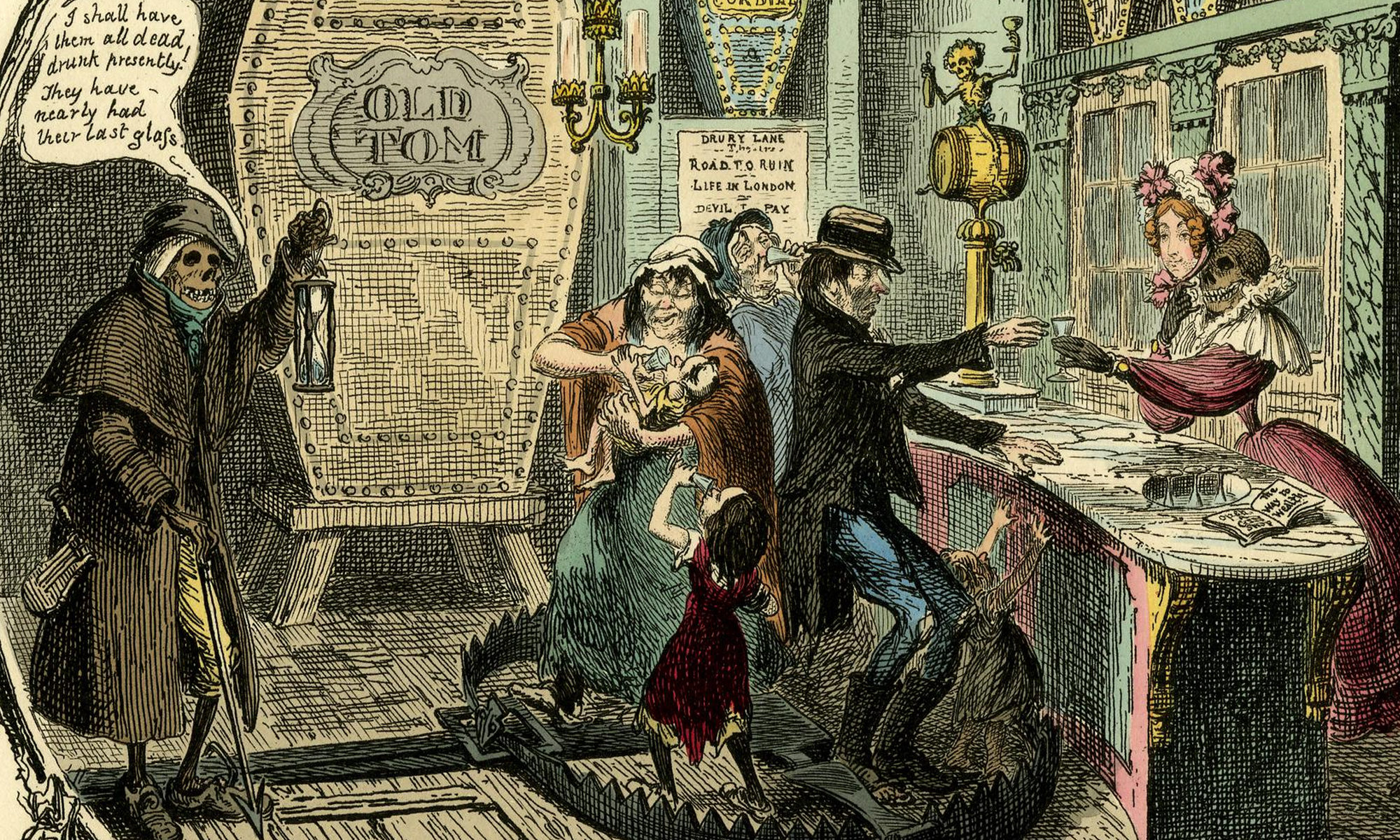Modes of Persuasion: Humour and the Promotion and Control of Intoxicants Past and Present
A free online workshop co-organised by the HERA research project Intoxicating Spaces: The Impact of New Intoxicants on Urban Spaces in Europe, 1600–1850 and the Wellcome Collection, to be held live via Zoom (UK time/GMT). Videos available below.
Thursday 21–Friday 22 January 2021
Focusing on the experience of the British Isles, this workshop will explore the role of humour in the promotion and control of intoxicants from the sixteenth century to the present day. Encompassing all kinds of drug – from licit commodities such as alcohol, caffeines, and tobacco to illegal substances like ecstasy and opium – the event will range across material, textual, and visual sources generated by advertisers, commentators, public health authorities, and reformers. We hope to emerge from the workshop with a clearer sense of how playfulness, levity, satire, and wit have historically figured and functioned within these discourses, with a particular view to informing practitioner and policy campaigns and communications around narcotics going forward.
Thursday 21 January
1:45pm: Welcome & Introduction
James Brown (University of Sheffield), Eoin O’Cearnaigh (Wellcome Collection), William Schupbach (Wellcome Collection), Phil Withington (University of Sheffield)
2–3:30pm: Panel 1: Materials & Collections
Chair: Eoin O’Cearnaigh (Wellcome Collection)
Peder Clark (University of Strathclyde)
‘E’ by Gum’: Comics, Harm Reduction, and Identities
Cynthia Roman (Lewis Walpole Library)
Hogarth’s The Bacchanalians to Cruikshank’s The Bottle: Picturing Intoxication in the Clubs and Streets of London
William Schupbach (Wellcome Collection)
Laughing Gas between the Scientists, the Dentists, and the Public
3:30–3:45pm: Tea Break
3:45–5:15pm: Panel 2: Promotion & Celebration
Chair: John Gallagher (University of Leeds)
Kate Davison (University of Sheffield)
‘The Delights of the Bottle’: Selling and Celebrating Intoxicants in Eighteenth-Century British Print
Steve McKevitt (Leeds Beckett University)
Refreshing the Parts – Humour and Storytelling: The Emergence of Emotional Appeals in Alcohol Advertising during the Late Twentieth Century
Bob Nicholson (Edge Hill University)
Comic Cocktails: Humour, American Drinks, and Transatlantic Relations in the Nineteenth Century
Friday 22 January
2–3:30pm: Panel 3: Control & Demonisation
Chair: Alice Mauger (UCD)
James Brown (University of Sheffield)
‘They Have Nearly Had Their Last Glass’: The Intoxicating Worlds of George Cruikshank
Alex Mold (LSHTM)
You Could Die Laughing: Humour and Anti-Intoxicant Campaigns in Twentieth-Century Britain
Emma Rhatigan (University of Sheffield) & Cathy Shrank (University of Sheffield)
Swelling and Puffing, Foaming and Spewing: Chastising Drunkenness from Pulpit to Page
3:30–3:45pm: Tea Break
3:45–5:15pm: Panel 4: Commentary & Discussion
Chair: Phil Withington (University of Sheffield)
James Nicholls (Transform Drug Policy)
Peter Rice (Scottish Health Action on Alcohol Problems)
Gerda Reith (University of Glasgow)

Featured Image
The gin shop is imagined as a macabre and treacherous space of death in this 1829 etching by caricaturist George Cruikshank. The barmaid is a skeleton in disguise, ‘Kill Devil’, ‘Deady’s Cordial’, and ‘Blue Ruin’ line the room in coffin-shaped receptacles, while the family of drinkers stand in a literal gin trap; another skeleton, accessorised with a rattle, spear, and hourglass, predicts ‘they have nearly had their last glass’. Cruikshank, whose father and brother were alcoholics, was still a heavy drinker himself when he created this image, although he embraced abstinence and became a prominent supporter of the temperance movement in the 1840s; he developed a particular disdain for gin. Wellcome Collection (CC BY-SA 4.0)

